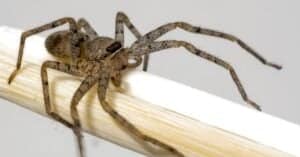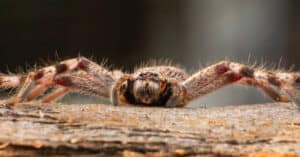Maryland is a state that is steeped in history. After all, its most well-known nickname, the Old Line State, was supposedly coined by George Washington to refer to its regular line troops who fought during the Revolutionary War. While many people associate the state with its past, others think of its natural beauty. Maryland is home to many plants and animals, including salamanders and eagles. The state is also home to many common and rare species of spiders. From orb weavers to jumping spiders, here is a list of 10 spiders in Maryland.
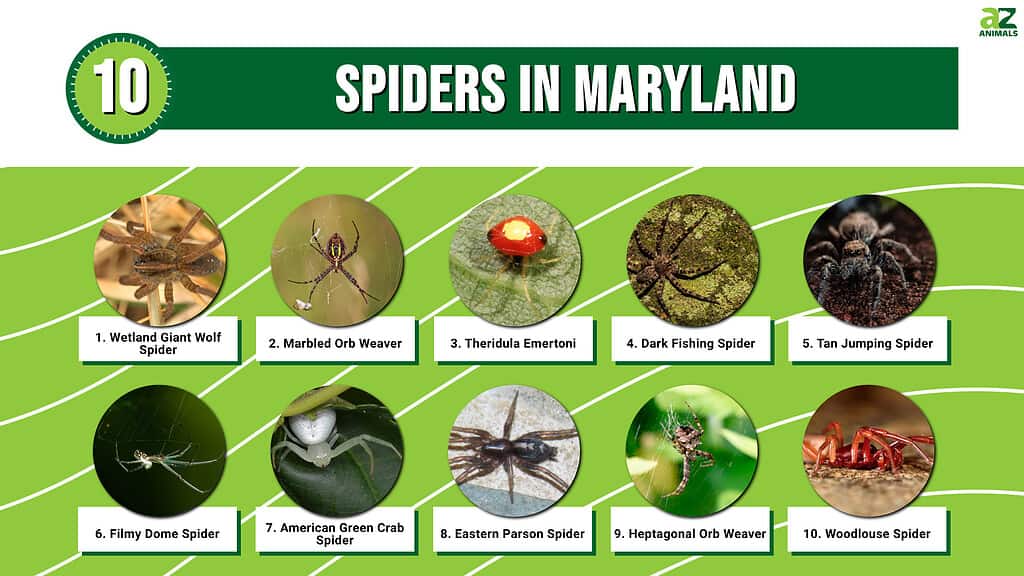
10. Woodlouse Spider
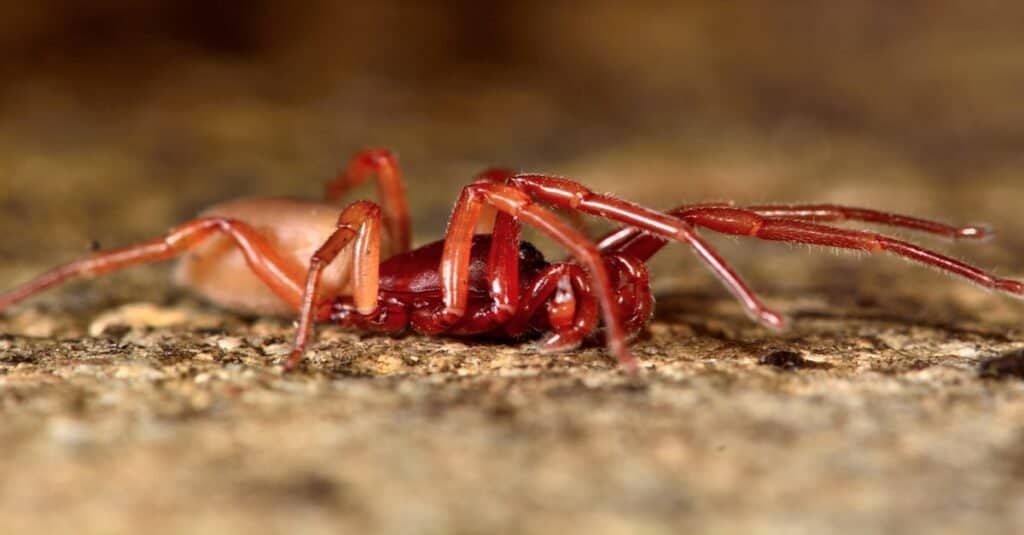
A
woodlouse
hunter possesses six eyes.
©IanRedding/Shutterstock.com
Most people commonly refer to Dysdera crocata as the woodlouse hunter or sowbug killer. It belongs to the family Dysderidae and lives on every continent except Antarctica.
Adult females normally measure between 11 and 15 millimeters long, while males measure from 9 to 10 millimeters long. Unlike most spiders, they possess 6 rather than 8 eyes. They also have chelicerae that measure disproportionately large in relation to their size. Their bodies and legs appear orangish-red, while their abdomens look yellowish-brown or grey.
You’re most likely to encounter these spiders in Maryland if you look in places where woodlice congregate. For example, under logs, rocks, leaves, or bricks. As their name implies, the diet of woodlouse spiders consists primarily of woodlice. They use their large chelicerae to pierce through the woodlouse’s tough exoskeleton. While their bite is powerful and can deliver a painful sting, it poses little threat to humans.
9. Heptagonal Orb Weaver
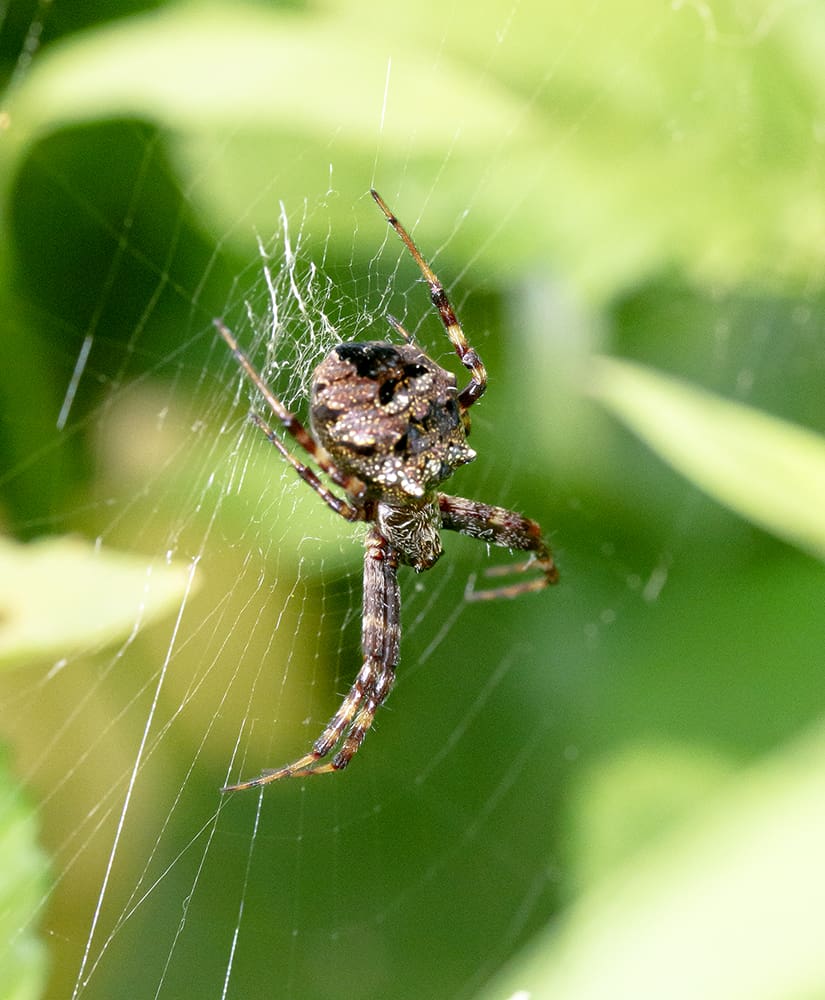
The heptagonal
orb weaver
is commonly found in Maryland.
©WanderingMogwai / Creative Commons – License
The heptagonal orb weaver, Gea heptagon, is one of many orb weavers spiders in Maryland. It belongs to the family Araneidae and ranks as the only member of the genus Gea in North America. While originally from the Pacific Islands and Australia, this tiny spider now lives throughout the United States and Argentina.
Adult heptagonal orb weavers average around 6 millimeters long, with males measuring smaller than females. They get their name from their distinctive seven-sided abdomen. Their abdomens also feature 6 white or grey spiny bumps, a lateral white line across the center, and a dark brown triangular marking near the rear. Meanwhile, the cephalothorax looks brown with yellow dots.
Heptagonal orb weavers construct small, 13-centimeter-wide webs to catch their prey. Notably, they can change their color and typically do so to avoid predators. Due to their small size, their bite poses no danger to humans.
8. Eastern Parson Spider
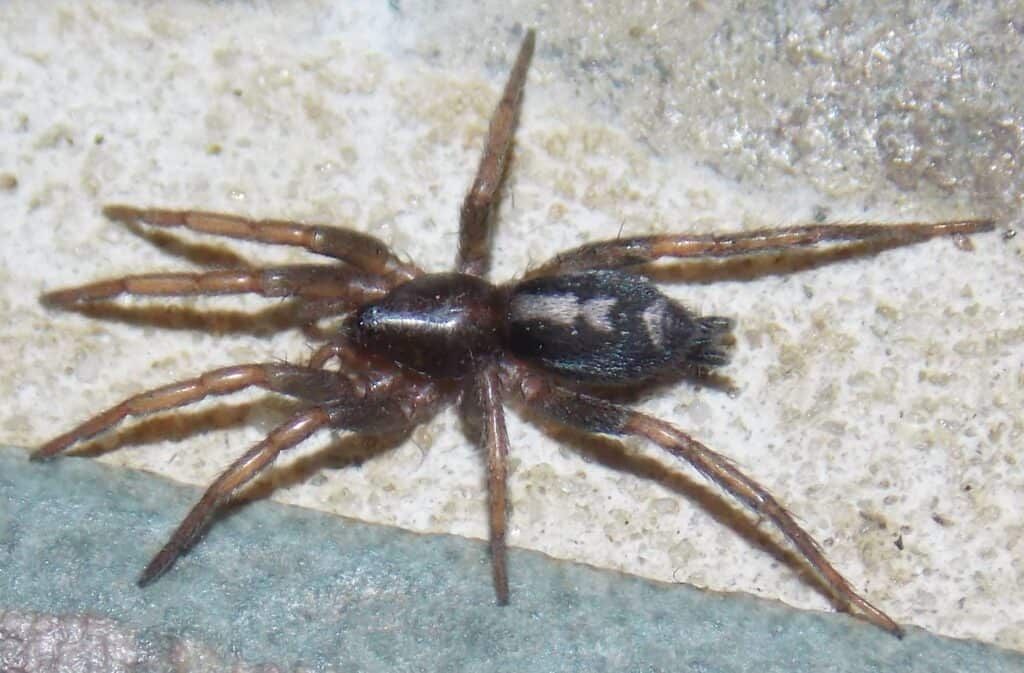
The Eastern parson spider ranges throughout the eastern half of the United States.
©Fyn Kynd/Flickr – License
Herpyllus ecclesiastics, or the eastern parson spider, belongs to the ground spider family Gnaphosidae. It is one of the most common hunter spiders in Maryland and ranges throughout much of the eastern half of the United States.
Adult eastern parson spiders measure between 10 and 20 millimeters long, with females measuring larger than males. Their bodies mostly look black or dark grey and are covered in fine hair. They get their name from a whitish-grey marking on their abdomens that resembles a cravat worn in the 18th century by catholic clergy.
Instead of using webs to catch prey, eastern parson spiders actively purpose their prey. They hide under rocks and logs during the day and then emerge at night to hunt. Many people consider them beneficial because they prey on household pests. While their bite is of no medical significance, it can cause some pain and swelling.
7. American Green Crab Spider

American green crab spiders hunt majorly for insects.
©Ryan Hodnett / Creative Commons – License
The American green crab spider, Misumessus oblongus, belongs to the crab spider family Thomisidae. It is the only member of the genus Misumessus. You can find these spiders in Maine and all the way to the southeastern United States.
Adult American green crab spiders measure from 3 to 7 millimeters long, with females measuring larger than males. They possess disproportionately long front legs designed to help them ensnare prey. Their name comes from their bright lime green color and habit of walking sideways and backward like a crab. Although they appear almost uniformly green in color, they have a thin red line around the front of the abdomen.
American green crab spiders hunt for insects by waiting on the petals or the leaves of flowers. Their bite poses no danger to humans due to their small size.
6. Filmy Dome Spider
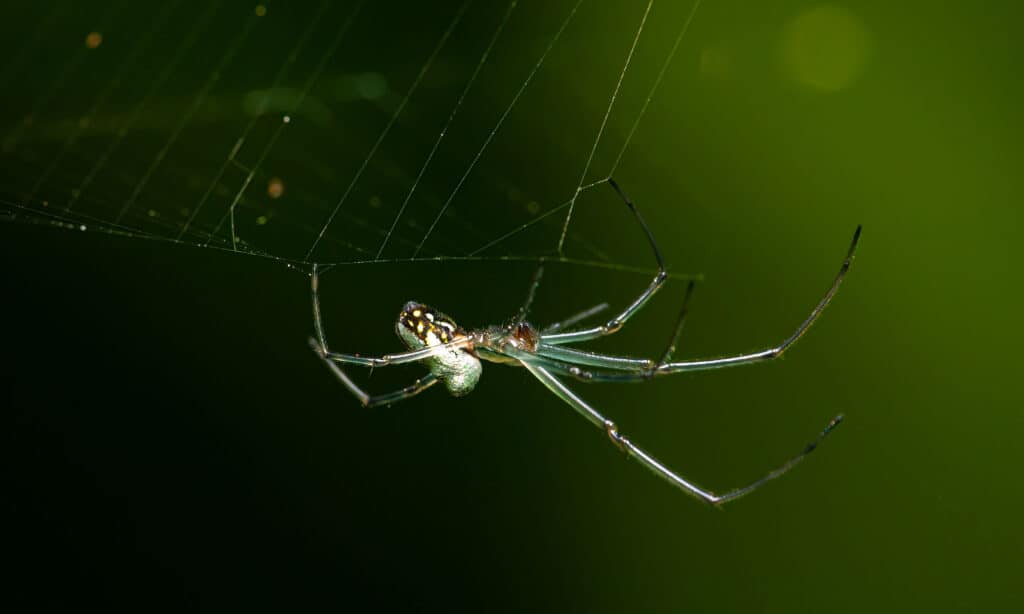
Filmy dome spiders use dome-shaped webs to capture prey.
©iStock.com/Tanuza
Neriene radiata also goes by the name the filmy dome spider. It belongs to the family Linyphiidae and is one of Maryland’s most common sheetweaver spiders. It is widely distributed throughout much of the United States and Canada.
Even fully-grown filmy dome spiders measure quite small, as most measure no more than 4 millimeters long. On top of it all, males measure slightly smaller than females. They appear mostly white aside from dark markings and a brown stripe down the center of their bodies.
Like other members of their family, filmy dome spiders construct dome-shaped webs that they use to capture prey. They hunt by waiting upside-down under a dome for insects to wander into their web. They usually prey on small flies. Due to their small size, their bite usually can’t pierce through human skin and poses no medical significance.
5. Tan Jumping Spider
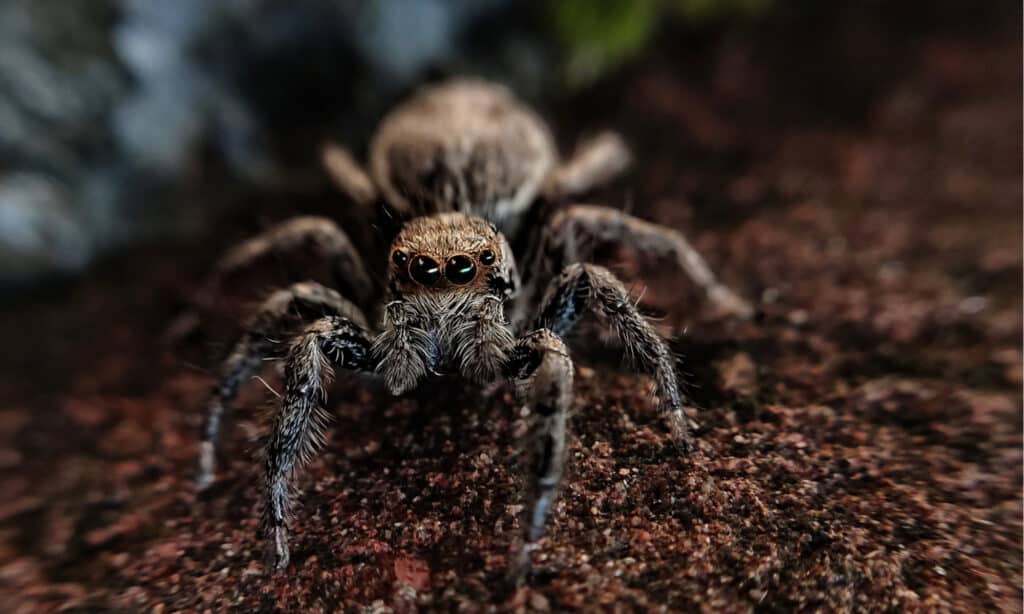
Tan jumping spiders have round eyes and a furry body.
©SwastikEs/Shutterstock.com
The tan jumping spider, Platycryptus undatus, is one of many jumping spiders in Maryland. Its range includes much of North as well as Central America.
Female tan jumping spiders measure between 10 and 13 millimeters long, while males measure from 8.5 to 9.5 millimeters long. Their bodies appear mostly brown, grey, or tan, which is where they get their name. They sport characteristic V-shaped markings running down the length of their abdomens. These markings look light grey or beige.
Like other members of the family Salticidae, tan jumping spiders do not construct webs to hunt prey. Instead, they rely on their quick eyesight and fast reflexes to catch small insects. If threatened, they tend to jump away but may bite if cornered. However, their bite is of no medical significance due to their small size.
4. Dark Fishing Spider

The dark fishing spider does not catch prey with its web.
©iStock.com/JasonOndreicka
The dark fishing spider, Dolomedes tenebrosus, is a member of the nursery web spider family Pisauridae. You can find this fishing spider in Maryland and throughout much of the eastern and central United States and Canada.
Adult female fishing spiders can measure up to 25 millimeters long, while males measure about half that size. As their name implies, they normally appear dark brown or grey and feature dark spots and spines on their legs. You can identify them thanks to the characteristic W-shaped markings along their abdomens.
Dark fishing spiders do not use webs to catch their prey. Like other family members, they dangle their front legs above the water and use them like fishing lures or nets to snag insects or small fish. At times they may also run across the water’s surface or even dive into the water to catch prey. They rarely act aggressively toward humans. While painful, their bite is not dangerous.
3. Theridula Emertoni
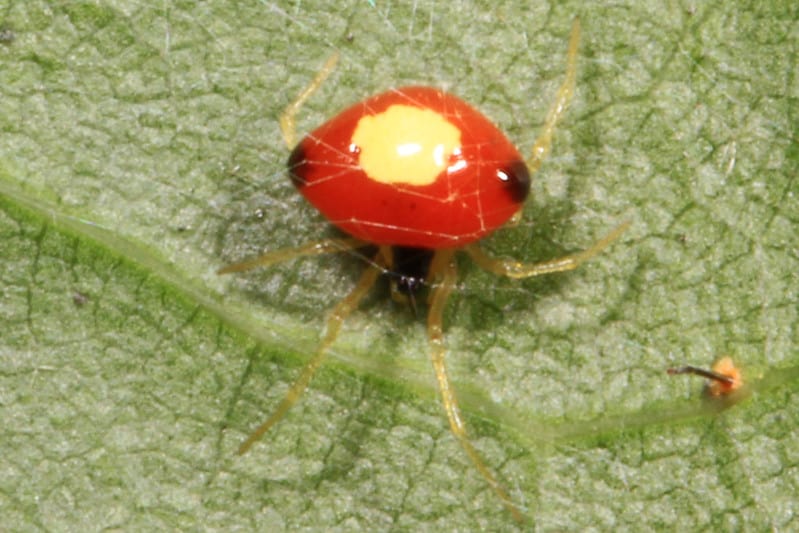
Theridula emertoni is a very small-sized spider.
©Judy Gallagher / flickr – License
Theridula emertoni is a curious little species in the cobweb spider family Theridiidae. It ranges throughout the United States and Canada. Like many other spiders, it has yet to receive a common name and only goes by its scientific name.
Female Theridula emetroni spiders measure between 1.7 and 2.8 millimeters long, and males measure from 1.6 to 2.3 millimeters long. They have long, thin legs that appear almost transparent. Meanwhile, their abdomens are quite large and are almost uniformly orangish-red aside from two black bumps on either side.
Like other members of its family, Theridula emertoni spiders build tangled cobwebs that they use to capture prey. Due to their small size, their bite is of no medical significance because their fangs aren’t usually large enough to pierce human skin.
2. Marbled Orb Weaver
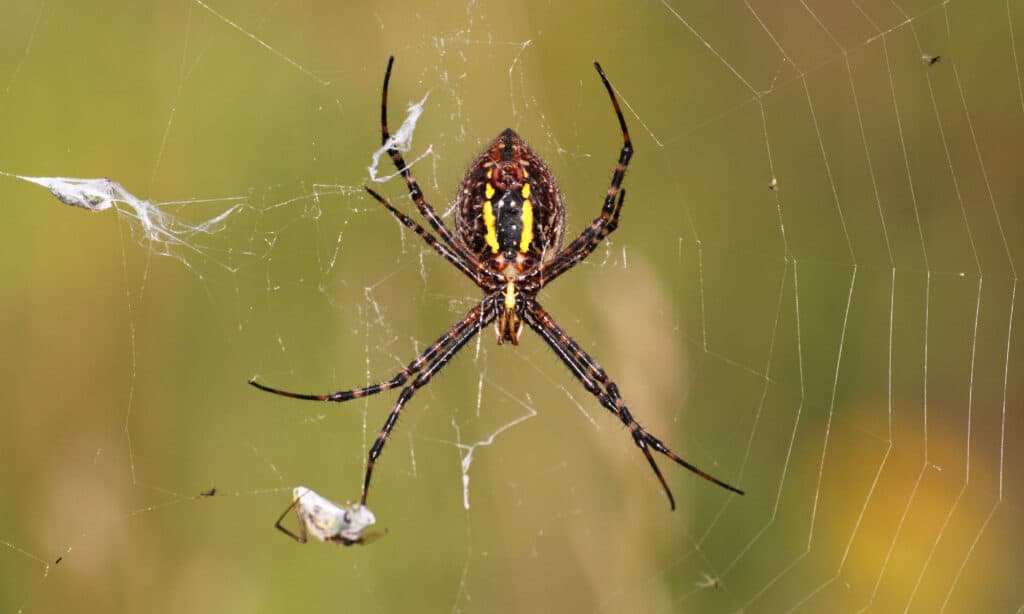
The marbled orb weaver features striking markings on its abdomen.
©iStock.com/mirceax
The marbled orb weaver, Araneus marmoreus, is another member of the family Araneidae to make our list of spiders in Maryland. Also known as the pumpkin spider, this visually striking arachnid lives in wooded areas throughout most of North America.
Female marbled orb weavers can reach nearly 20 millimeters long, and males can measure up to 9 millimeters long. The females feature enlarged, orange abdomens that look just like pumpkins, hence the name pumpkin spiders. Their abdomens normally feature black or brown marbling, but some specimens have only a single dark patch near the rear of the abdomen.
Marbled orb weavers construct vertically-oriented webs in trees, shrubs, and tall grasses. They hide in a silk retreat at the side of the web, where they lie in wait until insects stumble into their webs. While not aggressive, they can bite if cornered, but their bite is of no medical significance.
1. Wetland Giant Wolf Spider
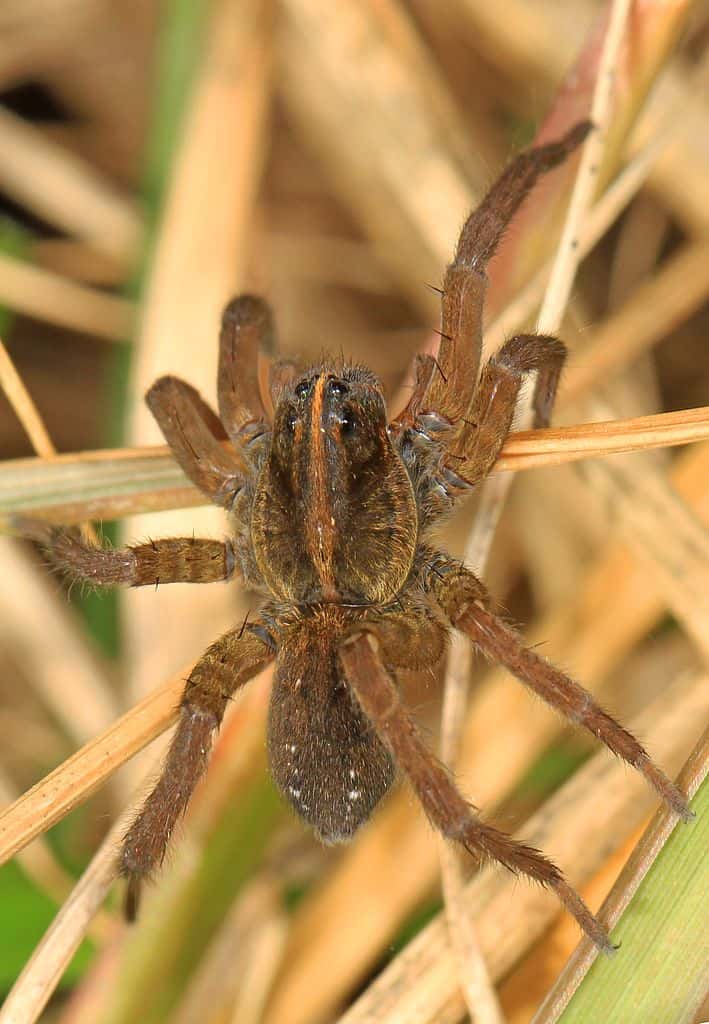
You can often find wetland giant wolf spiders in marshes or fields close to water.
©Judy Gallagher / Creative Commons – License
Tigrosa helluo, or the wetland giant wolf spider, belongs to the wolf spider family Lycosidae. You can find these spiders in Maryland as well as throughout much of the eastern half of the United States. As its name suggests, it’s mostly found in areas with plenty of fresh water, such as marshes and wetlands.
Adult wetland giant wolf spiders generally measure around 17 millimeters long, with males tending to measure smaller than females. Their bodies appear mostly brown aside from a characteristic yellow stripe down the center of the cephalothorax. They also feature dark spots on their abdomens.
Wetland giant wolf spiders do not use webs to catch their prey. They are active hunters that rely on their keen eyesight and powerful legs to chase down insects. Although they rarely act aggressively toward humans, they can deliver a painful bite. That said, their bite poses no real threat to humans.
Summary of 10 Spiders in Maryland
| Rank | Spider |
|---|---|
| 1 | Wetland Giant Wolf Spider |
| 2 | Marbled Orb Weaver |
| 3 | Theridula Emertoni |
| 4 | Dark Fishing Spider |
| 5 | Tan Jumping Spider |
| 6 | Filmy Dome Spider |
| 7 | American Green Crab Spider |
| 8 | Eastern Parson Spider |
| 9 | Heptagonal Orb Weaver |
| 10 | Woodlouse Spider |
The photo featured at the top of this post is © Fyn Kynd/Flickr – License / Original
Thank you for reading! Have some feedback for us? Contact the AZ Animals editorial team.





